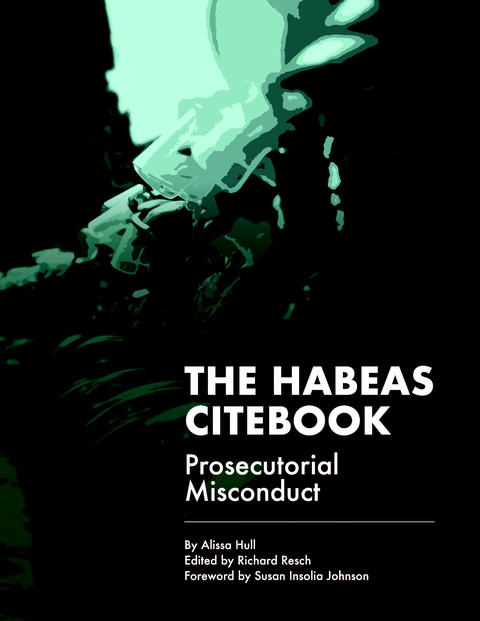×
You've used up your 3 free articles for this month. Subscribe today.
Divide and Conquer: New Algorithm Examines Crime-Scene Bullets Segment by Segment
Loaded on May 15, 2020
published in Criminal Legal News
June, 2020, page 30
Filed under:
Expert and Opinion Evidence/Testimony,
Opinions and Expert Testimony,
Firearms,
Evidence - Admissibility.
Location:
New York.
by the National Institute of Standards and Technology, U.S. Department of Commerce
On the morning of March 22, 1915, residents of the small town of West Shelby, New York, awoke to a horrific scene. A woman clad only in a bloodied nightgown lay shot to death in the snow ...
Full article and associated cases available to subscribers.
As a digital subscriber to Criminal Legal News, you can access full text and downloads for this and other premium content.
Already a subscriber? Login
More from this issue:
- Racism and Wrongful Convictions, by Matthew Clarke
- Sixth Circuit Grants Habeas Relief After Michigan Court Violates Confrontation Clause, by Dale Chappell
- Ninth Circuit: Mental Impairment that Prevented ‘Monitoring’ of Habeas Counsel’s Actions May Require Equitable Tolling, by Dale Chappell
- Tenth Circuit Vacates District Court’s Order Sealing Plea Supplement, Explaining Local Court Rule Doesn’t Abrogate Common Law Right of Access to Judicial Records, by Douglas Ankney
- Federal Judge Issues Order Reducing 40-Year Stacked § 924(c) Sentence Based on First Step Act Changes to Compassionate Release, by Chad Marks
- Latest Forensic Technology, Pattern Analysis, May Be ‘Pseudoscience’, by Michael Fortino, Ph.D
- SCOTUS: Jury Verdicts Must Be Unanimous to Convict on Criminal Charges, Overruling Apodaca, by Douglas Ankney
- ATF: What Is a Gun?, by Jayson Hawkins
- Michigan Supreme Court Announces that Duress May be Asserted as an Affirmative Defense to Felony Murder, Overruling Gimotty and Etheridge, by Douglas Ankney
- Texas Court of Criminal Appeals: Failure to Include ‘Or Others’ in Jury Instruction for Self-Defense Against Multiple Assailants Deprived Defendant of Defense, by Dale Chappell
- Virus Vigilantes v. Virus Violators: Shunning, Shaming, or Policing COVID-19 May not Be the Cure, by Michael Fortino, Ph.D
- SCOTUS: Due Process Doesn’t Require States to Adopt a Specific Test for Determining Insanity, by Douglas Ankney
- Fifth Circuit: Defendant Lacked Culpability in Attempting to Export Ammunition by Merely Purchasing It, by Anthony Accurso
- Second Circuit: Habeas Petition Not Moot Where It Attacked Inactive Original Order That Gave Rise to Current Active Order Restraining Petitioner’s Liberty, by Douglas Ankney
- Iowa Supreme Court Vacates Guilty Plea for Lack of Evidence and Ineffective Assistance of Counsel, by David Reutter
- Federal District Court Finds ‘Confusion’ Over Law in State Court Excused Late Filing of § 2255 Motion, by Dale Chappell
- Seventh Circuit Reiterates IAC Requires Only ‘Reasonable Probability,’ Not ‘More Likely Than Not,’ of Different Outcome, by Dale Chappell
- Divide and Conquer: New Algorithm Examines Crime-Scene Bullets Segment by Segment
- U.S. Supreme Court Justice Files Statement on Court’s Refusal to Hear Habeas Case, Despite Deep Circuit Split, by Dale Chappell
- SCOTUS: Knowledge that Driver’s License of Vehicle’s Registered Owner Was Revoked Provides Reasonable Suspicion to Initiate Traffic Stop, by Douglas Ankney
- Don’t Allow Government to Abuse Emergency Powers After COVID-19 Threat Subsides, by Douglas Ankney
- Illinois Supreme Court: Failing to Stipulate Felon Status Allowing Jury to Hear About Murder Conviction Constitutes IAC, by Anthony Accurso
- Notorious Louisiana Prosecutor Fired for Misconduct Technicality, by Edward Lyon
- 10th Circuit: Evidence Insufficient to Support Conviction for Attempting to Kill Witness, by Douglas Ankney
- $369,000 Settlement in Police Raid of Journalist’s Home and Office
- Delaware Supreme Court Clarifies Meaning of ‘Mixture’ as Used in State’s Controlled Substances Act, by Douglas Ankney
- Colorado Supreme Court: Defendant Has No Duty to Bring Himself to Trial, by Douglas Ankney
- Fifth Circuit Finds IAC for Failure to Object to Court’s Jury Instructions that Constructively Amended Indictment by Lowering Government’s Burden of Proof, by Dale Chappell
- Pennsylvania Supreme Court: Cronic’s Presumption of Prejudice Triggered by Counsel Failing to Secure Interpreter for First Day of Trial, by Douglas Ankney
- Ohio Supreme Court Announces New Standard for ‘Actual Racial Bias’ for Jurors and Holds Counsel Was Ineffective for Failing to Strike Racially Biased Juror, by Douglas Ankney
- U.S. Supreme Court Rejects Fifth Circuit’s Rule Barring Plain-Error Review of Unpreserved Factual Arguments, by Dale Chappell
- FBI’s Long History of Squelching Political Dissent Under the Guise of National Security, by Jayson Hawkins
- Utah Supreme Court: Dismissal of Second Post-Conviction Petition Improper Where First Petition Voluntarily Withdrawn, by Douglas Ankney
- No Consequences for Prosecutors’ Bad Behavior, by Jayson Hawkins
- Nevada Supreme Court Rules Bail Determination Requires Due Process and Severs Unconstitutional Language from Bail Statute, by Douglas Ankney
- Federal Court Overturns Conviction for Person Linked to Former Subway Spokesperson’s Child Porn Case, by Dale Chappell
- Study Sheds Light on ‘Recidivism’ and Probation and Parole Violations, by Dale Chappell
- Utah Residents Can Wind Up in Jail When They Miss Loan Payments, by Kevin Bliss
- California Court of Appeal: Unoccupied Running Vehicle Doesn’t Justify Warrantless Search of Residence, by Douglas Ankney
- Interpreting Emojis as Court Evidence, by Anthony Accurso
- LAPD Officers Accused of Entering Names of Innocent People Into Gang Database, by Douglas Ankney
- ‘No-Knock Raids’ an Increasing Danger to Public Safety, by Jayson Hawkins
- Massachusetts Supreme Judicial Court Clarifies Standards for Exit Order and Patfrisk, by Anthony Accurso
- A Mass Purge of Misconduct Records by Phoenix, Arizona Police, by Bill Barton
- Cops in Missouri Exploit Loophole to Seize $2.6 Million from Innocent Citizens, by Douglas Ankney
- How Old Is That Fingerprint?, by Douglas Ankney
- News in Brief
More from these topics:
- California Court of Appeal Announces Defendants May Obtain Brady Evidence From Police Officers’ Personnel Files in Advance of § 1172.6 Hearing Requesting Vacatur of Conviction and Resentencing for Certain Types of Murder Convictions, Feb. 15, 2025. Disclosure of Records, Police, Brady Violations, Murder/Felony Murder, Resentencing, Prior Conviction/Sentence/Incarceration, Evidence - Admissibility.
- Minnesota Supreme Court Announces No Duty to Retreat When Using Reasonable Force in Defense of Another and Provides Framework for Analyzing Such Claims, Feb. 1, 2025. State Law Claims, Wrongful Use of Force, Firearms.
- Texas Court of Criminal Appeals Grants Habeas Relief in ‘Shaken Baby Syndrome’ Case, Feb. 1, 2025. junk science, Habeas Corpus, Forensic Sciences, Child Abuse/Abusers, Evidence - Admissibility.
- Maryland Supreme Court Clarifies Process for Admitting Co-Conspirator’s Hearsay Statements During Police Interview Under ‘Declaration Against Penal Interest’ Exception, Trial Court Must ‘Parse’ Interview to Determine Admissibility of Each Statement, Feb. 1, 2025. Standard of Review, Police Interrogations, Evidence - Admissibility, Hearsay Evidence, Co-conspirator Statements.
- Ninth Circuit Announces ‘Hate Crime’ Sentence Enhancement Under Guidelines § 3A1.1(a) Requires Finding Defendant Motivated by Hate or Animus, Feb. 1, 2025. Hate Crimes, Sentence Enhancements/Departures, Evidence - Admissibility.
- Eighth Circuit: Evidentiary Admissibility Is a “Red Herring” At Class Certification of St. Louis Jail Conditions Challenge, Jan. 15, 2025. Classification, Conditions of Confinement, Class Certification, Class Actions, Evidence - Admissibility.
- Arkansas Supreme Court Announces Petition for Testing Forensic Evidence Based on Advances in Technology Under Act 1780 of 2001 May Be Filed by Anyone Convicted of a Crime, Not Just Those Still in State Custody, Dec. 1, 2024. Forensic Sciences, Evidence - Admissibility.
- Texas Court of Criminal Appeals Announces Prosecution’s Duty to Provide Discoverable Evidence Upon Request Applies to Discoverable Items in Law Enforcement Agencies’ Possession Unbeknownst to Prosecution and Exclusion Is Appropriate Remedy for Violation, Dec. 1, 2024. Brady Violations, Evidence - Admissibility.
- Researchers Discover Wire-Cutting Evidence Is Too Unreliable for Court, Aug. 1, 2024. junk science, Forensic Sciences, Evidence - Admissibility.
- Massachusetts Supreme Judicial Court Affirms Trial Court’s Exclusion of Expert Testimony on iPhone’s Frequent Location History Data as Not Sufficiently Reliable Under Daubert-Lanigan Standard, June 15, 2024. Cell Site Location Information ("CSLI"), Opinions and Expert Testimony, Daubert Standards.





